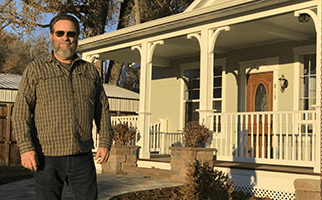


Over the course of two years, Randy Hamilton built a single-story custom home in which he planned to live out his retirement with his wife, Lois. But by the end of the construction process, Hamilton found himself in a standoff with government officials who were threatening him with criminal prosecution and the possibility he might never be able to occupy or sell his new home.
It all came about because Hamilton didn’t want to hire a contractor to calculate whether his air conditioning and heating system had been properly sized for his 1,500-square foot home.
Hamilton is no novice when it comes to home construction. He’s been building homes for much of his life. “Throughout the time I’ve been contracting, I’ve always been able to do the work without having to hire,” Hamilton said. “Now we’ve reached a point where that’s not true because of the things that [the government] is requiring me to do.”
In any residential, commercial, or industrial construction job, there are now special calculations that determine the size of the air conditioner, furnace, and ductwork needed for the project. Those calculations are intended to make sure that too small an air conditioner isn’t installed, causing the unit to run too often at an unnecessary cost, or that the air conditioner isn’t too large, making a room clammy and uncomfortable.
Before such special calculations existed, air conditioning installers used rules of thumb largely tied to a room’s square footage to determine the appropriate size heating, ventilation and air conditioning system.
Over time, the calculations became more complex, as insulation, windows, and other construction factors came into play. The “Manual J” HVAC load calculation was developed to make the process of planning HVAC systems more consistent and accurate. And then government entities started to require it. The city of Nampa, where Hamilton has been battling government inspectors, added it to its regulations about 10 years ago. The state of Idaho added the requirement in 2011. Today, around 40 states require builders to use Manual J, according to the Building Codes Assistance Project, which advocates for more stringent building regulations, including energy requirements.
Unlike other building code requirements, there’s next to no public safety hazard for not having the HVAC assessment done. To be sure of this, I consulted with the most knowledgeable HVAC businessman I know: Bruce Hoffman, my dad, who spent decades in the field.
“To make someone get a Manual J done is totally and completely ridiculous,” Dad told me. He recommends having one, but says it shouldn’t be required. Another point, Dad noted, is that some characteristics about a residence change over time, affecting the calculations. At their own house, for example, my parents cut down nearby trees, altering the size of the air conditioner needed to cool their home.
Hamilton notes that the requirement exists even if he chose to install baseboard heat and a window or wall air conditioner.
When he refused to hire someone to do the calculation, the city of Nampa took away his certificate of occupancy, put a lien on the property, and threatened him with criminal prosecution.
Nampa’s director of building safety, Patrick Sullivan, acknowledges the Manual J requirement has nothing to do with safety but contends he can’t pick and choose which ordinances and statutes to administer.
“I’ll enforce what is on the books. I don’t have a horse in the race,” he told me.
Ultimately, Hamilton did acquiesce, and had the calculation done. It cost him a lot of money. “The only ones who were happy were the HVAC people,” he said.
But that’s not the worst of it. Throughout Hamilton’s professional life, he’s been able to build things on his own, his own way. Using your own knowledge and skills to build, to create, and then to live in your creation has always been part of the grandeur and the blessing of private property ownership. Not so much any longer. But Hamilton is not giving up.
“In the future, I hope to be an advocate for the public and help make city, county and state government more user-friendly for the individual wanting to build or remodel their own home,” he said.
Wayne Hoffman is president of the Idaho Freedom Foundation. Research by Janae Wilkerson.

